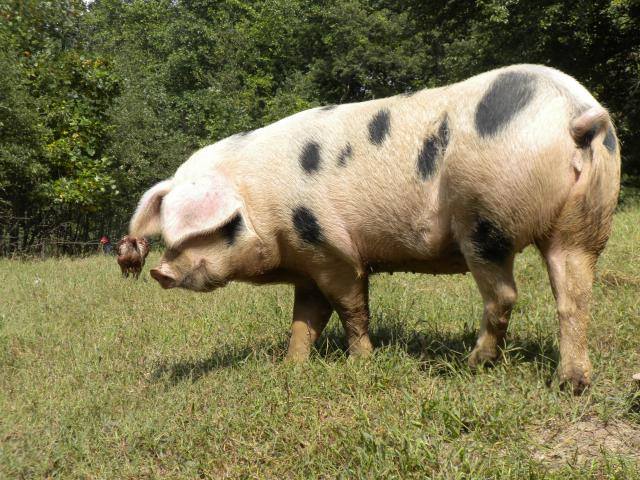
This stimulated the domestication of local European wild boar, resulting in a third domestication event with the Near Eastern genes dying out in European pig stock. ĭNA evidence from subfossil remains of teeth and jawbones of Neolithic pigs shows that the first domestic pigs in Europe had been brought from the Near East.

It was sustained in urbanized regions, however. It reduced gradually during the Bronze Age, as rural populations focused instead on commodity-producing livestock.

In the Near East, pig husbandry spread for the next few millennia. Pigs were separately domesticated in China beginning 8,000 years ago, and have been one of the most important domesticated animal there ever since. Those animals must have been introduced from the mainland, which suggests domestication in the adjacent mainland by then. Remains of pigs have been dated to earlier than 11,400 years ago in Cyprus. HistoryĪrchaeological evidence suggests that pigs were domesticated from wild boar in the Near East in the Tigris Basin, Çayönü, Cafer Höyük, Nevalı Çori being managed in the wild in a way similar to the way they are managed by some modern New Guineans. The American Society of Mammalogists considers it a separate species. He gave it the name Sus domesticus, which is still used by some taxonomists. However, in 1777, Johann Christian Polycarp Erxleben classified the pig as a separate species from the wild boar. The pig is most often considered to be a subspecies of the wild boar, which was given the name Sus scrofa by Carl Linnaeus in 1758 following from this, the formal name of the pig is Sus scrofa domesticus. The genome of the pig has been sequenced and contains about 22,342 protein-coding genes. Pigs have a maximum life span of about 27 years. Pigs have small lungs in relation to their body size, and are thus more susceptible than other domesticated animals to fatal bronchitis and pneumonia. These represent four separate, independent mutations. Mongooses, honey badgers, hedgehogs, and pigs all have modifications to the receptor pocket which prevents the snake venom α-neurotoxin from binding. Pigs are one of four known mammalian species which possess mutations in the nicotinic acetylcholine receptor that protect against snake venom. At higher temperatures, pigs lose heat by wallowing in mud or water via evaporative cooling, although it has been suggested that wallowing may serve other functions, such as protection from sunburn, ecto-parasite control, and scent-marking.

Their thermoneutral zone is 16 to 22 ☌ (61 to 72 ☏). Pigs are also less able than many other mammals to dissipate heat from wet mucous membranes in the mouth through panting. elephants, rhinos, and mole-rats), do not use thermal sweat glands in cooling. Pigs, however, like other "hairless" mammals (e.g. Pigs possess both apocrine and eccrine sweat glands, although the latter appear limited to the snout and dorsonasal areas. Most pigs have rather a bristled sparse hair covering on their skin, although woolly-coated breeds such as the Mangalitsa exist. įour hoofed toes are on each foot, with the two larger central toes bearing most of the weight, but the outer two also being used in soft ground. In the male, the canine teeth can form tusks, which grow continuously and are sharpened by constantly being ground against each other. The dental formula of adult pigs is 3.1.4.3 3.1.4.3, giving a total of 44 teeth. The snout is used to dig into the soil to find food and is a very acute sense organ. The pig typically has a large head, with a long snout which is strengthened by a special prenasal bone and a disk of cartilage at the tip. Pigs, especially miniature breeds, are kept as pets. The animal's bones, hide, and bristles are also used in products. A group of pigs is called a passel, a team, or a sounder. When used as livestock, pigs are farmed primarily for the production of meat, called pork. Most even-toed ungulates are herbivorous, but pigs are omnivores, like their wild relative.

Compared to other artiodactyls, a pig's head is relatively long and pointed. The size and weight of hogs largely depends on their breed. The pig's head-plus-body length ranges from 0.9 to 1.8 m (3 to 6 ft), and adult pigs typically weigh between 50 and 350 kg (110 and 770 lb), with well-fed individuals even exceeding this range. It is variously considered a subspecies of Sus scrofa (the wild boar or Eurasian boar) or a distinct species. The pig ( Sus domesticus), often called swine, hog, or domestic pig when distinguishing from other members of the genus Sus, is an omnivorous, domesticated, even-toed, hoofed mammal.


 0 kommentar(er)
0 kommentar(er)
